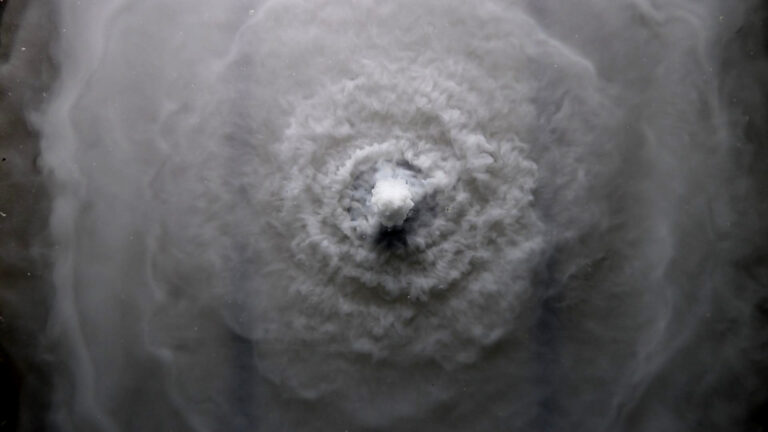New research into volcanic eruptions could help predict their hazards, including tsunamis and surfing hot rock avalanches.
Explosive research
Volcanic eruptions large enough to create a caldera, or cauldron-like hole, also create flows of volcanic ash and rock, and sometimes tsunamis. But we don't really understand their behaviour and these resulting hazards.
Underwater explosive caldera-forming eruptions tend to form 'terraces' on the seafloor, an example being the 3,600-year-old Santorini caldera north of Crete in Greece.
UBC researchers simulated these eruptions by injecting powerful jets of sand-water mixtures into, as well as through, layers of water. They also investigated existing underwater calderas.
Surfing hot what now?
They found that sedimentation waves descending from the jet tops during shallow submarine eruptions impact the sea surface, spreading to create tsunamis and surfing hot rock avalanches, or hot ash and rock flows that move across the water, says first author Dr. Johan Gilchrist (he/him), a recent UBC graduate.
The resulting terraces are a fingerprint for the eruption's mechanics, allowing researchers to work backwards and determine eruption intensity, size of sedimentation waves, timing between tsunamis and more.
Climate clues
This work could be used to predict future hazards for this kind of eruption, enabling accurate hazard maps and timelines, as well as providing clues as to why some of the largest eruptions have had an unexpectedly minor climate impact.







